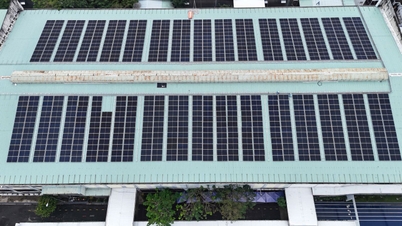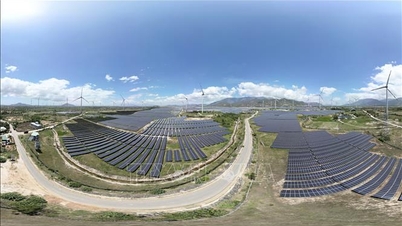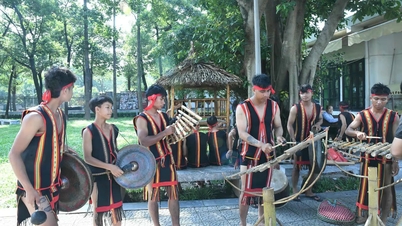Vietnam is the driving force behind ASEAN's renewable energy growth, accounting for 69% of total solar and wind power output by 2022.
Ember, a British independent, non-profit climate and energy consultancy, said in its latest report that total solar and wind power output in Southeast Asia reached more than 50 TWh last year (compared to 4.2 TWh in 2015).
Vietnam has been identified as the main driving force behind the region’s renewable energy growth in recent years. Vietnam alone is expected to contribute 69% of the region’s total solar and wind power output by 2022.
This organization assessed that the favorable policy environment is the reason for the boom in solar power in Vietnam in recent years. In 2017, Vietnam introduced a feed-in tariff (FIT, 6.67-10.87 cents per 1kWh) in 2017. This is considered an effective plan, making the market more attractive. The government also has land lease exemptions and tax exemptions for related equipment, helping to improve the competitiveness of renewable energy compared to traditional energy.
The phase-out of this tariff from 2021 to 2022 has led to a general slowdown in the region’s solar growth, according to Ember. The bloc’s solar and wind growth is expected to slow to 15% in 2022, compared to an annual average of 43% since 2015.
However, combined solar and wind power still accounted for 13% of Vietnam’s total electricity output last year – the highest in Southeast Asia. According to Ember, the overall growth trend of the region does not necessarily reflect the growth trend of specific countries. For example, in Indonesia, the Philippines, Thailand, and Singapore, the growth rate of solar power in 2022 increased compared to 2021.
Solar and wind power are among the most promising technologies that have the potential to create new markets, boost jobs, and help transform the energy transition, said report author Dinita Setyawati.
Besides Vietnam, Thailand also has the largest solar power potential and the third largest wind power capacity in the region. Last year, the country contributed 16% of total output to ASEAN.
In the Philippines, the development of renewable energy offers an opportunity for decarbonization. The Philippines is the second largest producer in Southeast Asia, so there is a large demand for energy from industry. Last year, the archipelago contributed 5% of ASEAN’s total wind and solar power output.
The organization also forecasts that ASEAN clean electricity output will grow positively again in 2023 thanks to large projects coming into operation. Thailand also implemented a FIT mechanism for renewable energy last year. Meanwhile, Vietnam is currently proposing an auction mechanism to develop renewable energy projects. Currently, more than 99% of ASEAN's potential is untapped.
Vnexpress.net


![[Photo] General Secretary To Lam attends the Vietnam-UK High-Level Economic Conference](https://vphoto.vietnam.vn/thumb/1200x675/vietnam/resource/IMAGE/2025/10/30/1761825773922_anh-1-3371-jpg.webp)
![[Photo] General Secretary To Lam meets former British Prime Minister Tony Blair](https://vphoto.vietnam.vn/thumb/1200x675/vietnam/resource/IMAGE/2025/10/30/1761821573624_tbt-tl1-jpg.webp)


![[Photo] National Assembly Chairman Tran Thanh Man receives foreign ambassadors who came to say goodbye](https://vphoto.vietnam.vn/thumb/1200x675/vietnam/resource/IMAGE/2025/10/30/1761820977744_ndo_br_1-jpg.webp)
![[Photo] Touching scene of thousands of people saving the embankment from the raging water](https://vphoto.vietnam.vn/thumb/1200x675/vietnam/resource/IMAGE/2025/10/30/1761825173837_ndo_br_ho-de-3-jpg.webp)






























![[Photo] Standing member of the Secretariat Tran Cam Tu visits and encourages people in the flooded areas of Da Nang](https://vphoto.vietnam.vn/thumb/1200x675/vietnam/resource/IMAGE/2025/10/30/1761808671991_bt4-jpg.webp)







































































Comment (0)